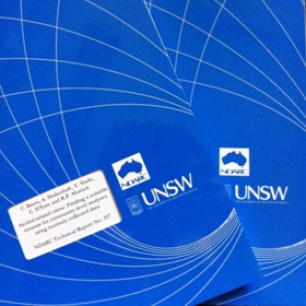NDARC Technical Report No. 314 (2010)
INTRODUCTION
What is grey literature?
Grey literature is material that is not formally published by commercial publishers or peer reviewed journals and is produced by institutions, academics, organisations, and government agencies. It includes reports, unpublished data, conference proceedings, dissertations, policy and other documents and personal correspondence. The proliferation of end-user driven content on the Web has increased the availability of grey literature. Many organisations, institutions and agencies make grey literature available on their websites. There are also several grey literature databases which can be searched for references of data sources. Authors are often willing to provide the document of interest upon request, if the source is unavailable online.
Why use grey literature?
Peer reviewed literature and grey literature sources operate in relatively separate spheres with unique information in each. It is sometimes imperative to supplement information from peer reviewed literature with the information rich grey literature sources. The searches for grey literature that resulted in the first edition of this reference document were conducted in late 2007 and early 2008 as part of two larger projects being carried out at the National Drug and Alcohol Research Centre (NDARC) at the University of New South Wales, Sydney, Australia namely: Secretariat for the Reference group to the United Nations on HIV and injecting drug use; and Mental Disorders and Illicit Drug Use Expert Group for the Global Burden of Disease project.
Similar exercises were conducted in 2009 and additional sources of grey literature were identified and are presented in this revised edition. The Secretariat for the Reference Group to the United Nations on HIV and Injecting Drug Use collected information on the epidemiology of injecting drug use and HIV/AIDS in 2007-08, and in 2009 on the coverage of HIV/AIDS prevention and care service for injecting drug users. Researchers working on the illicit drug use and disorders component of the Global Burden of Disease project are compiling data for regional estimates of prevalence, incidence, remission, and duration of drug dependence disorders, as well as the associated mortality for cannabis, amphetamine type stimulants, cocaine, heroin and other opiates, and benzodiazepines. Identifying grey literature in addition to peer reviewed literature was paramount for both projects, since the peer reviewed literature does not typically include data from all countries or regions. This report includes a comprehensive list of websites and databases with available grey literature on drugs, alcohol and HIV/AIDS.
METHODOLOGY
Searching for grey literature
Electronic search strategies were used to identify grey literature. The first step in the search for grey literature was to consult a qualified librarian about electronic databases that include grey literature sources for drug use and dependence. Many of these databases were listed as links on the National Drug and Alcohol Research Centre’s website. Additional databases and websites were found by consulting the related links pages on websites that were identified via search engines and recommendations from colleagues.
In addition, the names of organisations responsible for collating state and national level statistics were identified from several reports and the corresponding websites were located where possible. Finally websites of all Ministries of Health and National AIDS commissions/programs were included in the search. The list of databases and websites was complemented with suggestions by experienced librarians and experts in the field of drug, alcohol and HIV/AIDS research.
Non-English websites
This report includes websites from countries across the world and many of the websites listed have content in languages other than English.
For the purpose of identifying relevant material for the research processes outlined above (see section 1.2) the web based translation tool ‘Google Translate’ was used to search and review non- English language websites. Google Translate is a free and useful tool that can be used to translate whole websites or selected text between multiple languages.
Additional information
In addition to websites and online databases, electronic forums or eForums (also referred to as eGroups, bulletin boards, discussion forums and message boards) can be an important portal for obtaining grey literature. These topic orientated discussion lists, run by interest groups are dependent on user-generated content and the potential benefit lies in the ability to directly connect with a large audience of topic-orientated subscribers that may have important information that would not be accessible via conventional search engines.
USING THIS DOCUMENT
This resource presents the name and link to useful websites for identifying drug, alcohol and HIV/AIDS related grey literature. The information is divided into four main sections:
- General databases
- Websites of institutions, organisations, government agencies and health departments, organised by location
- Specific HIV/AIDS and harm reduction databases
- Specific HIV/AIDS and harm reduction websites organised by location.
The websites and corresponding addresses that are presented in this document were current at the time of publication. It is important to be aware that web site addresses may change. It is hoped, however, that the descriptive information provided in this document will assist in finding websites that may have been relocated following publication.


